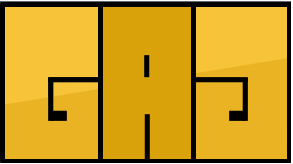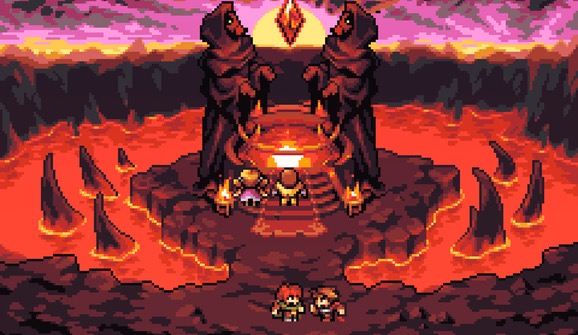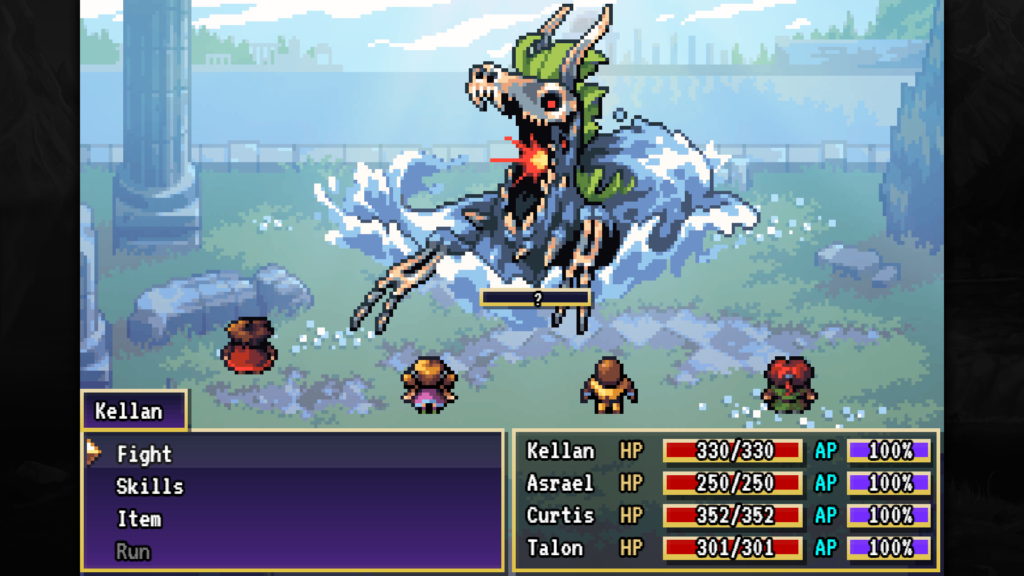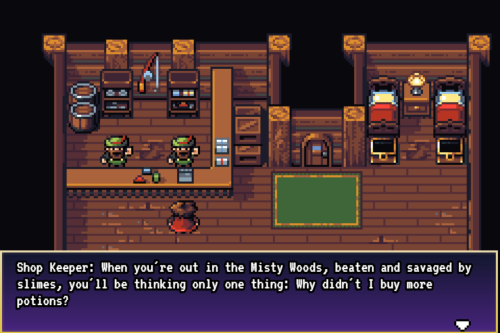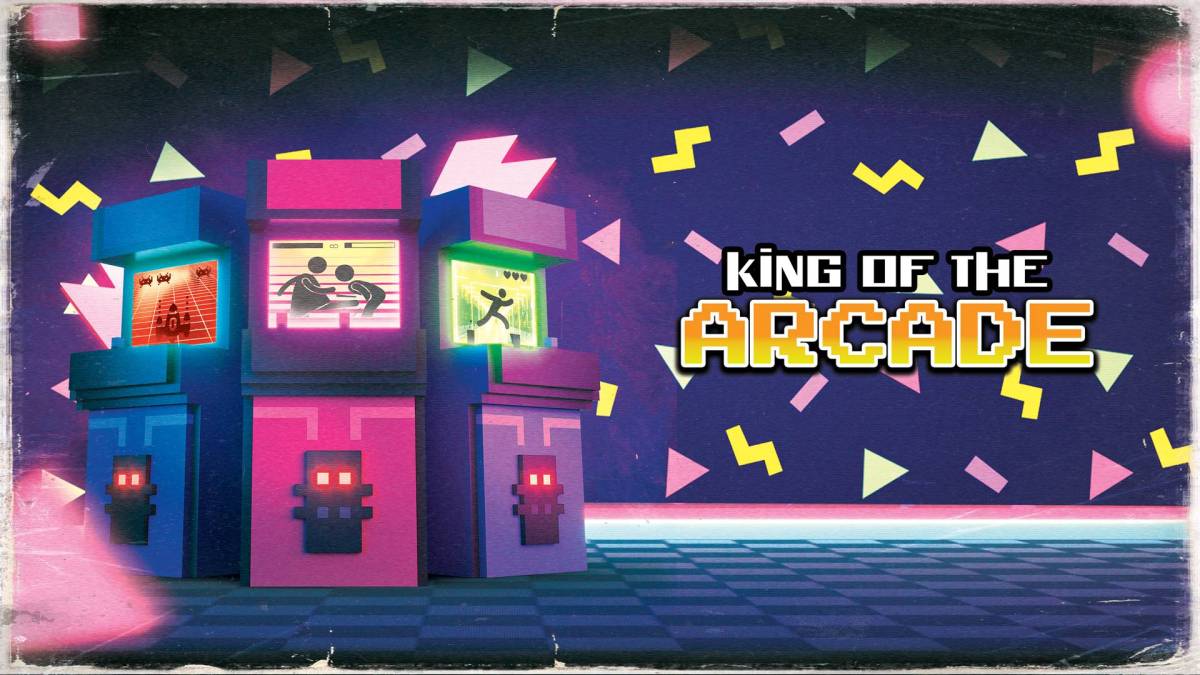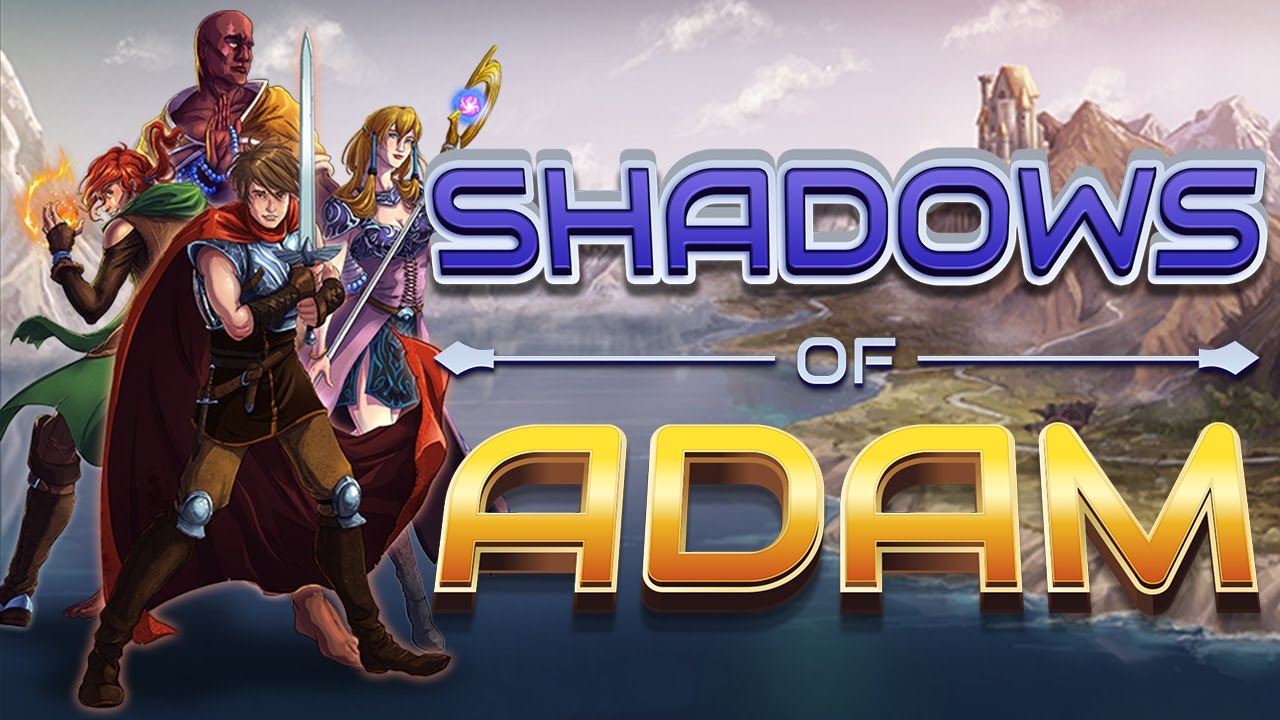
Platforms: Windows (reviewed), Mac, and Linux
It’s been tough to find the time to go back to some of my favorite JRPG from my youth. While a single playthrough of Chrono Trigger can be done in less than 20 hours, I know myself well enough that not hitting the New Game Plus option to get the multiple endings wouldn’t be satisfying enough. Final Fantasy VI is a not-so-brisk 40 hours. Phantasy Star IV and Earthbound are a bit more forgiving at about 25 to 30 hours, but the random encounter rates and need to grind can be enough to drive even the most determined veteran away. Shadows of Adam goes for being one of those experiences for someone who appreciates a good battle system but doesn’t have the time to spend level grinding for hours.
Appreciating the look of it might be something dependent on your interest in pixel art. If it’s your thing, there’s a lot to appreciate. The character sprites show a lot of expression (one of my favorites that is criminally underused is Kellan’s jaw-drop) and the background scenery can be quite impressive. The soundtrack has some great songs and it complements the mood quite well. A soundtrack can absolutely make or break a game for me depending on how well it’s implemented. Here it does a wonderful job of standing out just enough to be memorable, but also stays in the background enough that it doesn’t take front center. This, as someone who has literally hundreds of video game soundtracks, is one of the most important and hardest to pull off things for a soundtrack.
The battle system is one with basic turn based RPG commands, but it hides a surprising amount of depth. I initially started plugging away level grinding, finding myself frustrated at how long it seemed to take and how often I found Asrael, the magic-oriented character, getting knocked out. After spending more time then I should have doing this, Talon joined the party and it all came together for me. Rather than necessitating stopping progress to level up, Shadows of Adam instead gives you a continually recharging AP (ability points) system that encourages you to experiment with the use of your abilities. Each character has an ability that will restore more AP, requiring them to take no action that turn but also will provide some sort of buff for the next round. Not merely making you defend for that turn adds a little thought as to when to use this ability for each character instead of just effectively taking them out of the fray for a round. This gives you more than enough options to take on encounters that are otherwise too much for you to simply swing away blindly at using the Fight command.
Merely mashing on the attack command will often lead to results that don’t end well, making you think about the enemies you’re facing and what their weaknesses are and how to best exploit them. In a bit of a roundabout way, Shadows of Adam reminds me of Final Fantasy XIII, requiring you to strategize the use of buffs on your party members, making Talon, who seems like, save for Asrael, the most fragile member of your party. As Talon grew, I found him to be the secret superstar of the party, gaining abilities that allow other characters to attack twice in a round for two rounds. Add in his ability that ups the speed and evasion for three rounds for a character, you’re looking at him allowing someone to become an absolute wrecking ball that can barely be hit for a couple of rounds. There are other combinations of abilities to use that can take further advantage of this system, but the fun is in the experimentation, so I’ll leave them for you to discover.
The story is one that’s well-paced with small hooks to keep you interested through the long haul. The mysteries of just what was going on in Adam, the titular town you start off in, are far-reaching. They not only affect the story on the global scale, but your entire party has darker moments in their past that can all be traced back to Adam. It might be the worst town that you can have any connection to since Silent Hill. While the troubles aren’t at all as horrendous as the things that go on there, the effects of events in Adam casts a long shadow (see what I/they did there?).
The only real discernible weak point of Shadows of Adam is the consistency of the writing. Sometimes you get well thought out, clever lines that add to the charm of it. Other times, you get dialogue that’s strictly serviceable to moving the game along. The witch near the beginning of the game stands out as one of the more memorable moments in the game, her oddball behavior and obsession with Curtis sticking in mind well after that sequence. Some of the more uncomfortable moments between Kellan and Talon had me thinking their childhood rivalry was more than that, leaning more towards bitterness and, at times, disdain for one another. The moments that don’t stand out aren’t bad, they just filter to the back of your mind, likely to be forgotten as soon as the next line appears on the screen.
Shadows of Adam set out to be an RPG that struck a chord with those of us who really got their start in the genre in the 16-bit era, all the while, trimming a lot of the fat that makes it hard to go back to some of those games. This makes it more approachable for both those who have considerably less free time on their hands than they did back then and for people who didn’t grow up playing those games. It might not have as many stand out moments as a lot of those 16-bit era classics, but Shadows of Adam is a charming experience that never has you worrying about making forward progress. With a combat system that keeps you on your toes, this turned out to be a surprising little gem of a game that, if you have any interest at all in traditional 16-bit JRPG’s, you should definitely give a go.
And if you’re curious and want to know more about it, John and I had a fun conversation with Tyler Mire from Something Classic on the podcast a few weeks ago.
